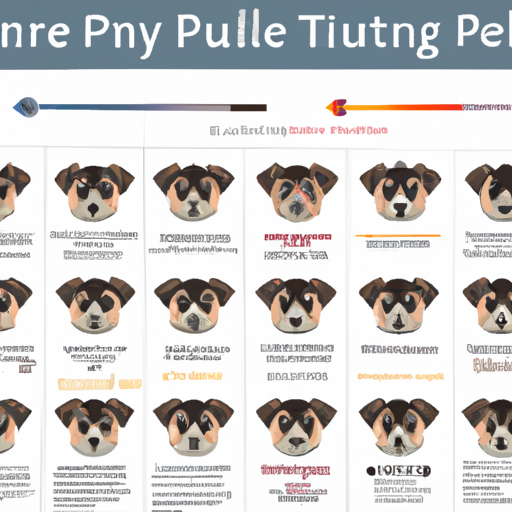1. Understanding the Puppy Teething Process
As the caregiver of a young canine, you may notice that your puppy loves to chew on everything in sight. This isn’t just due to their playful nature, but actually a crucial part of their development: teething. Just like human babies, puppies go through a teething phase where their baby teeth fall out and are replaced by adult teeth.
2. The Stages of Puppy Teething
Let’s break down the stages of teething into a convenient age chart:
| Age (weeks) | Teething Stage | Description |
|---|---|---|
| 2-4 | Birth Teeth | Puppies are born without teeth. The first set, known as milk teeth or baby teeth, start to emerge. |
| 5-6 | Full Set of Baby Teeth | By this age, your puppy should have a full set of 28 baby teeth. |
| 12-16 | Teething Begins | Baby teeth start to fall out, replaced by adult teeth. You might notice teething symptoms such as excessive chewing. |
| 17-25 | Adult Teeth Eruption | All adult teeth (42 in total) should be present. Teething symptoms usually end by this stage. |
3. Symptoms of Puppy Teething
During the teething process, your puppy may exhibit various symptoms. These can include excessive chewing, drooling, and a decrease in appetite due to the discomfort of sore gums. The puppy might also be more irritable than usual.
4. How to Soothe a Teething Puppy
As a caregiver, there are several strategies to help your puppy through this uncomfortable period:
- Chew Toys: Provide a variety of safe and appropriate chew toys. This will not only soothe their gums but also keep them from chewing household objects.
- Cold Treats: Frozen carrots or ice cubes can provide relief to sore gums. Be sure to supervise your puppy while they’re consuming these.
- Puppy Teething Gel: This can be gently massaged onto the gums to alleviate discomfort.
5. Dental Care for Puppies
Even during the teething phase, it’s essential to start dental care routines. Brush your puppy’s teeth regularly using a toothbrush and toothpaste designed for dogs.
6. When to Visit the Vet
Although teething is a normal process, you should monitor for signs of complications, such as:
- Persistent bad breath
- Retained baby teeth
- Swollen, red, or bleeding gums
- Difficulty eating
If you notice any of these symptoms, schedule a visit to the vet as soon as possible.
7. The Importance of Understanding Puppy Teething
Understanding the puppy teething process allows you to better care for your pet during this crucial developmental stage. By knowing what to expect, you can provide the necessary comfort, care, and dental hygiene that your puppy needs.
8. FAQ
Q: How long does the teething process last for puppies?
Teething usually begins around 12 weeks and ends by 25 weeks. However, each puppy is unique and may follow slightly different timelines.
Q: Are certain breeds more susceptible to teething issues?
While teething is a universal process for all puppies, breeds with misaligned or overcrowded teeth may experience a more difficult teething process.
Q: Can I still play tug-of-war games with my teething puppy?
Yes, but be gentle. If your puppy appears to be in pain, choose a softer toy or another game.
By understanding the teething process, you’re not only becoming a better caregiver to your puppy, but also ensuring they grow up to have a healthy and happy life.



